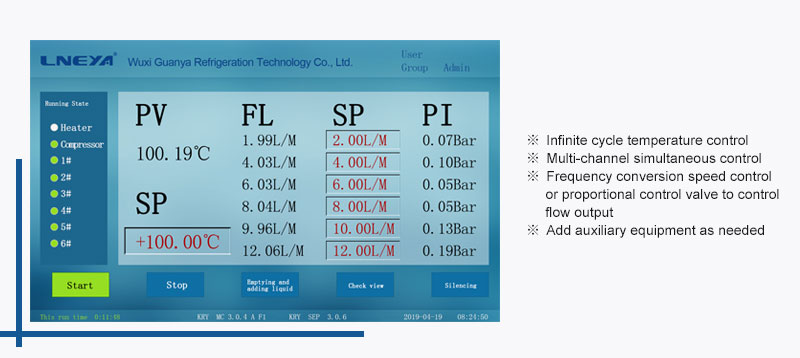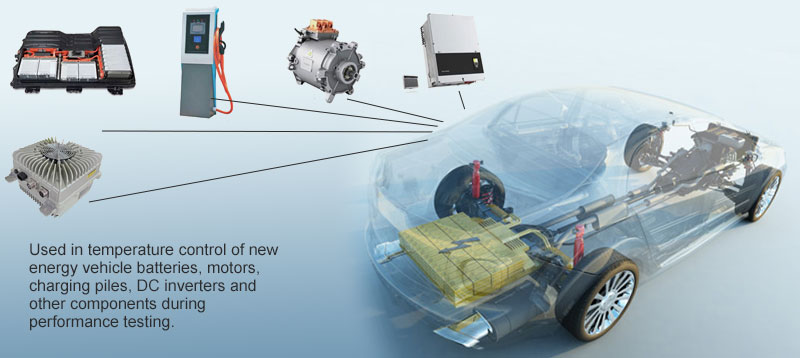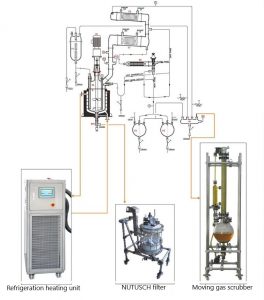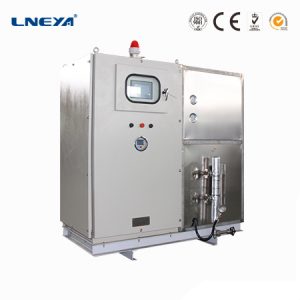É correto prolongar a duração da bateria baixando a temperatura ambiente?
A bateria pode funcionar numa vasta gama de temperaturas, mas tal não permite que a bateria seja carregada em condições de temperatura elevada. O processo de carregamento é mais delicado do que o processo de descarregamento, pelo que é necessário ter extremo cuidado. O frio extremo e as temperaturas elevadas reduzem a aceitação da carga, pelo que a temperatura da bateria deve ser ajustada para moderada antes do carregamento.
The fast charging limit for most batteries is 5°C to 45°C; for best results, please consider narrowing the temperature range to 10°C to 30°C, because when charging nickel-based batteries below 5°C , The recombination ability of oxygen and hydrogen will decrease. If the charging speed is too fast, pressure will build up in the battery, which may cause exhaust. When charging below freezing point, reduce the charging current of all nickel-based batteries to 0.1°C.
Para carregar rapidamente a todas as temperaturas, algumas baterias industriais adicionaram uma manta de isolamento térmico para aquecer a bateria até uma temperatura aceitável. Outros carregadores ajustam a taxa de carregamento à temperatura atual. Por conseguinte, recomenda-se que o utilizador final carregue apenas à temperatura ambiente.
Como revelam as baterias de arranque dos nossos automóveis, o chumbo-ácido é tolerante a temperaturas extremas. Parte da razão para esta tolerância é a sua ação lenta. A taxa de carga recomendada a baixas temperaturas é de 0,3°C, o que é quase o mesmo que em condições normais. A uma temperatura confortável de 20 °C, a inflação começa com uma tensão de carga de 2,415 V/célula. Quando se atinge -20 °C, o limiar de deflação sobe para 2,97 V/célula.
As baterias de chumbo-ácido são carregadas com uma corrente constante para uma tensão definida, que é normalmente 2,40 V por bateria à temperatura ambiente. Esta tensão é controlada pela temperatura e é definida como mais alta quando está fria e mais baixa quando está quente. A Figura 1 ilustra as definições recomendadas para a maioria das baterias de chumbo-ácido.
O congelamento de uma bateria de chumbo-ácido pode causar danos permanentes. Mantenha sempre a bateria totalmente carregada, porque no estado descarregado, o eletrólito é mais parecido com água do que quando está totalmente carregado e congela mais cedo. Uma bateria cheia de chumbo-ácido pode facilmente romper o invólucro, o que pode causar fugas se congelar. O saco selado de chumbo-ácido perde a sua eficácia e só pode ser utilizado durante alguns ciclos antes de se desvanecer e precisar de ser substituído.
O ião de lítio pode ser carregado rapidamente a uma temperatura de 5°C a 45°C. Quando a temperatura é inferior a 5°C, a corrente de carregamento deve ser reduzida e, devido à diminuição da taxa de difusão no ânodo, o carregamento não é permitido à temperatura de congelação. Durante o processo de carregamento, a resistência interna da bateria fará com que a temperatura aumente ligeiramente, compensando assim parte do frio. Quando está frio, a resistência interna de todas as pilhas aumenta, o que prolonga significativamente o tempo de carregamento.
Muitos utilizadores de baterias não sabem que as baterias de iões de lítio de consumo não podem ser carregadas abaixo de 0°C. Embora a bateria pareça estar a ser carregada normalmente, ocorrerá um revestimento metálico de lítio no ânodo durante a carga de congelamento secundária. Este revestimento é permanente e não pode ser eliminado através de um ciclo. Se expostas a vibrações ou outras condições de stress, as baterias revestidas a lítio são mais propensas a falhar.
Estão a ser feitos progressos no carregamento de iões de lítio a temperaturas abaixo de zero. A maioria das baterias de iões de lítio pode, de facto, ser recarregada, mas apenas com correntes muito baixas. No entanto, alguns iões de lítio especiais podem ser carregados até -10°C a uma temperatura reduzida.
O calor é o pior inimigo das baterias, incluindo as de chumbo-ácido. Diz-se que adicionar uma compensação de temperatura ao carregador de chumbo-ácido para ajustar as alterações de temperatura pode prolongar a vida útil da bateria até 15%. As baterias à base de níquel carregadas a altas temperaturas reduzem a produção de oxigénio, reduzindo assim a aceitação da carga. O aquecimento pode levar o carregador a pensar que a bateria não está totalmente carregada.
Os iões de lítio têm um bom desempenho a altas temperaturas, mas a exposição prolongada ao calor reduzirá a sua vida útil. O carregamento e o descarregamento a altas temperaturas geram gás, o que pode fazer com que a bateria cilíndrica liberte gás e provoque o inchaço da bateria de bolsa. Muitos carregadores proíbem o carregamento a temperaturas superiores a 50°C.
Por conseguinte, para os fabricantes de baterias, os testes de carregamento e utilização das baterias desempenham um papel importante no processo de produção, uma vez que afectam completamente a sua reputação depois de o produto ser colocado no mercado. A simulação da temperatura ambiente de teste requer um bom sistema de controlo da temperatura. O dispositivo de arrefecimento para teste de baterias LNEYA da série KRY é especialmente concebido para este domínio. A gama de controlo da temperatura é de -40°C a 100°C. O dispositivo de arrefecimento passa uma temperatura específica durante o teste do fabricante da bateria. Curvar e registar as mudanças de temperatura, suportar um KRY para ligar a vários equipamentos de teste.
Recomendações relacionadas
-
Máquina de água de arrefecimento da bateria Precauções de utilização do refrigerador
1588A máquina de água de arrefecimento da bateria Chiller é utilizada para o sistema de arrefecimento da bateria de energia nova. O usuário precisa prestar atenção para evitar o uso indevido durante a operação, o que faz com que o resfriamento da bateria e a máquina de circulação de água...
Ver detalhes -
O equipamento profissional de alta qualidade ajuda o laboratório a produzir resultados infinitos
2861Nos últimos anos, a economia da China continuou a crescer. Sob a oportunidade de desenvolvimento de máquinas profissionais integradas de alta e baixa temperatura, as realizações científicas e tecnológicas de laboratório também estão em desenvolvimento sustentável. LNEYA...
Ver detalhes -
Treatment of organic waste gas by condensation method
1955Condensation treatment of organic waste gas equipment should pay attention to its performance when selecting. It is very necessary to choose high-performance condensation method to treat organic waste gas. So what is the use of organic waste gas f...
Ver detalhes -
Como escolher um fabricante com baixa taxa de falha 3p freezer?
1448Existem muitos factores na escolha de um congelador 3p, e os utilizadores devem ser cautelosos na escolha de um fabricante. Escolha um congelador 3p com uma baixa taxa de falhas para reduzir os custos operacionais. Ao utilizar um congelador 3p, o custo de utilização de um congelador 3p irá conti...
Ver detalhes
 LNEYA Refrigeradores industriais Fabricante Fornecedor
LNEYA Refrigeradores industriais Fabricante Fornecedor

















